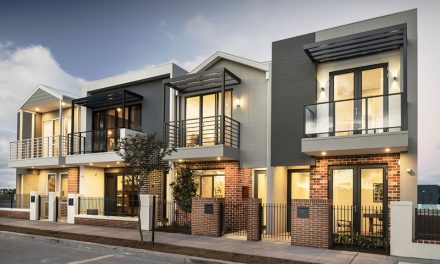These are the sort of things that can tax a relationship!
For me, it’s the fact that my wife will fix her horse fences ten times with bailing twine, taking ten minutes each time rather than spending half an hour just once to do it properly. Grrrr.
To me, it smacks of a lack of quality, which is more all the more galling because I know she is normally so good at everything else she does.
I went to a site yesterday to look at a problem with a footing, and the first thing that jumped out at me was that the telescoping steel sub floor piers (like Uni-Piers) had been installed upside down!
And when you install them upside down the larger cylinder becomes a cup that holds water – and so will rust out in no time.
This building has been passed by the certifier and is occupied. In turn, it demonstrates a lack of quality from the builder and the certifier.
A lack of quality, and an associated lack of durability, is an ongoing issue for the building industry.
I recently inspected a client’s house to look at some defects and I told him he should just sell it. There were durability problems everywhere; rotting fascias, roof gutters holding water, corroding reinforcement, unventilated sub floors, spalling render and more.
The building will continually be a money-pit due to initial, quite honestly, crappy building quality.
The timber industry is not immune from these kind of problems. Even the truss industry has had problems with corroding nail plates and rotting timber when products were used inappropriately.
Quality means doing it right, even when the work is not monitored. Providing a durable structure is one of those situations when no one is looking.
There has been significant use of H3 LOSP treated timber for external balconies in recent years. And with it, there appears to be a commensurate upswing in durability problems with these balconies.
H3 treated timber is by definition suitable for use for “˜periodic wetting’. The problem is that lots of joints within an exposed balcony can hold water so that the timber is wet for long periods.
This is compounded by the problem that the cut ends of the timber reveal the untreated core of the timber.
If the builder is not diligent (and let’s face it, there are just as many bad builders out there as superb builders) then this timber will rot.
To make matters worse, the outcome for balcony timbers that rot has the potential to be far worse than for many other structures. Balconies are generally what engineers can call “˜non-redundant structures’; the failure of one member can lead to a total collapse.
And compared to other areas in a house, balconies can be exposed to very high crowd loads.
Picture this: you have supplied H3 treated balcony timbers to a builder who sails close to the wind, quality wise. His apprentice puts up the majority of the balcony. No treatment of cut ends occurred.
Ten years later, at a 21st birthday party, there are a bunch of drunks on the balcony. Someone leaving the party gets their gear off in the front garden and the crowd rushes to the railing. How good is that structure now?
A solution for exposed decks is to detail the structure so that permanent wetting is not going to happen; flashing can be installed on the top of joists and bearers, laminated timbers can be installed with spaces so that they breathe, half checked joints can be avoided, and many other approaches.
Where there is the potential for water entrapment, extended periods of high humidity and poor ventilation, there is some evidence that some treatment other than LOSP performs better despite the fact that, notionally at least, they are acceptable for the same exposure.
Where there is the potential for water entrapment H4 treatment is the go.
A related scenario is a fully weather sealed external balcony. It’s inside the fibre cement sheet cladding, so the timbers can theoretically be untreated.
However, it is pretty much certain that a balcony’s waterproofing will fail one day. I have seen plenty with waterproofing that was rubbish from day one. Water gets into the structure and sits there. The timber rots. In my designs I am specifying treated timbers for sealed balconies.
The builder knew about his upside down piers. I am guessing that he knew about them well before the building superstructure was constructed above. He made the mistake of assuming no one was looking, quality wasn’t his thing.
He might also have some balcony collapses waiting to happen. But right now he has to change the stumps out on a building that is occupied above him!
Sometimes poor quality comes back to bite the dog’s own tail.Paul Davis is an independent structural engineer managing his own consulting firm Project X Solutions Pty Ltd.
Phone: (02) 4576 1555 | Email: pauldavis@timbertradenews.com









